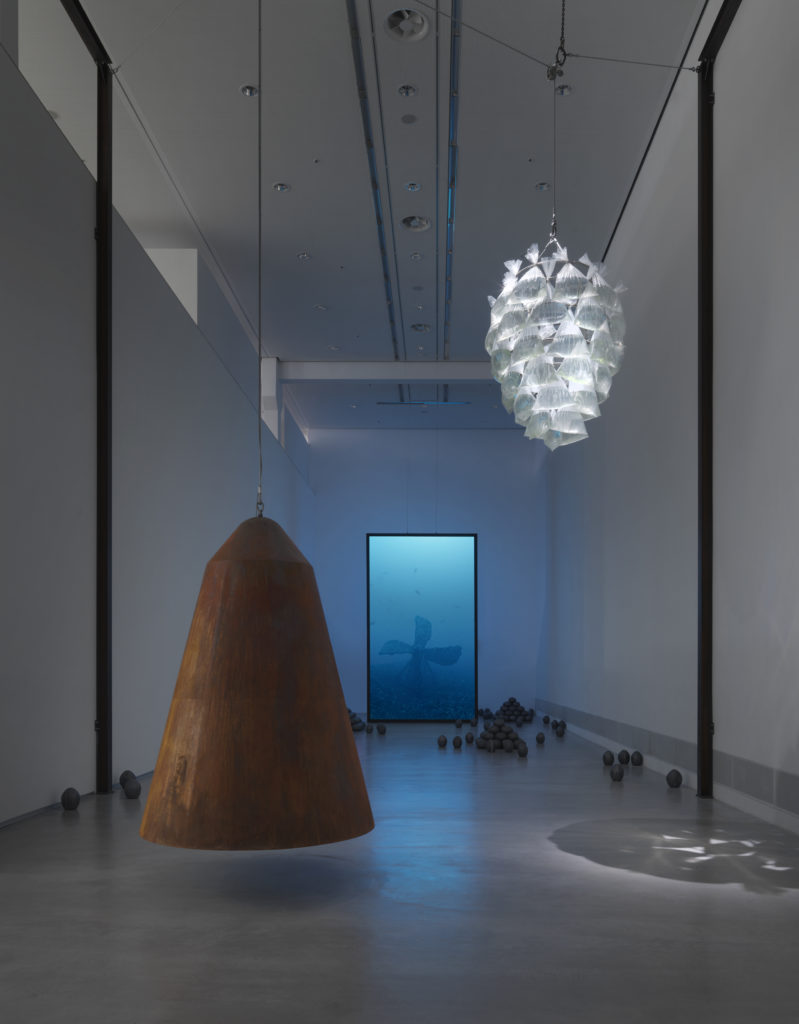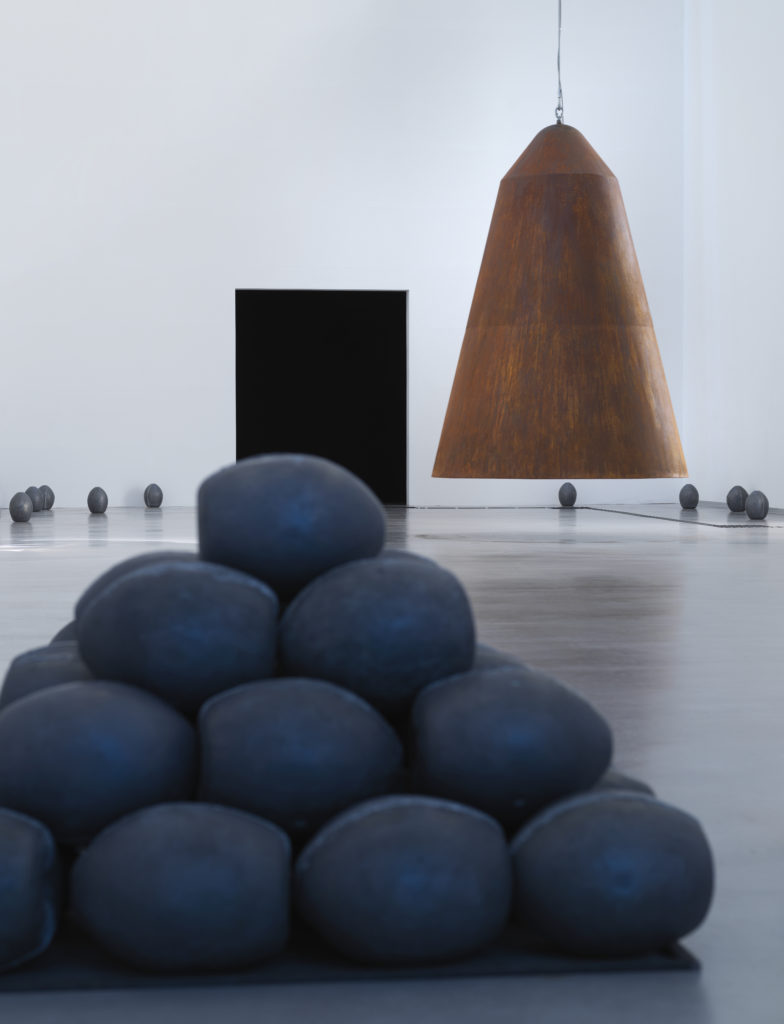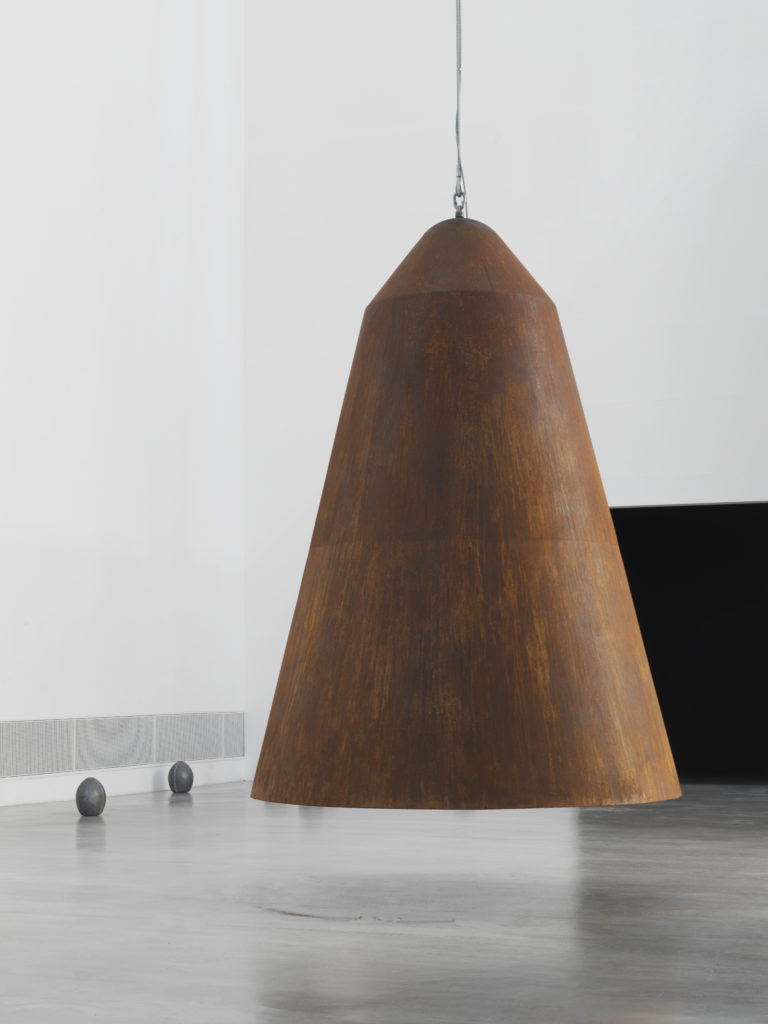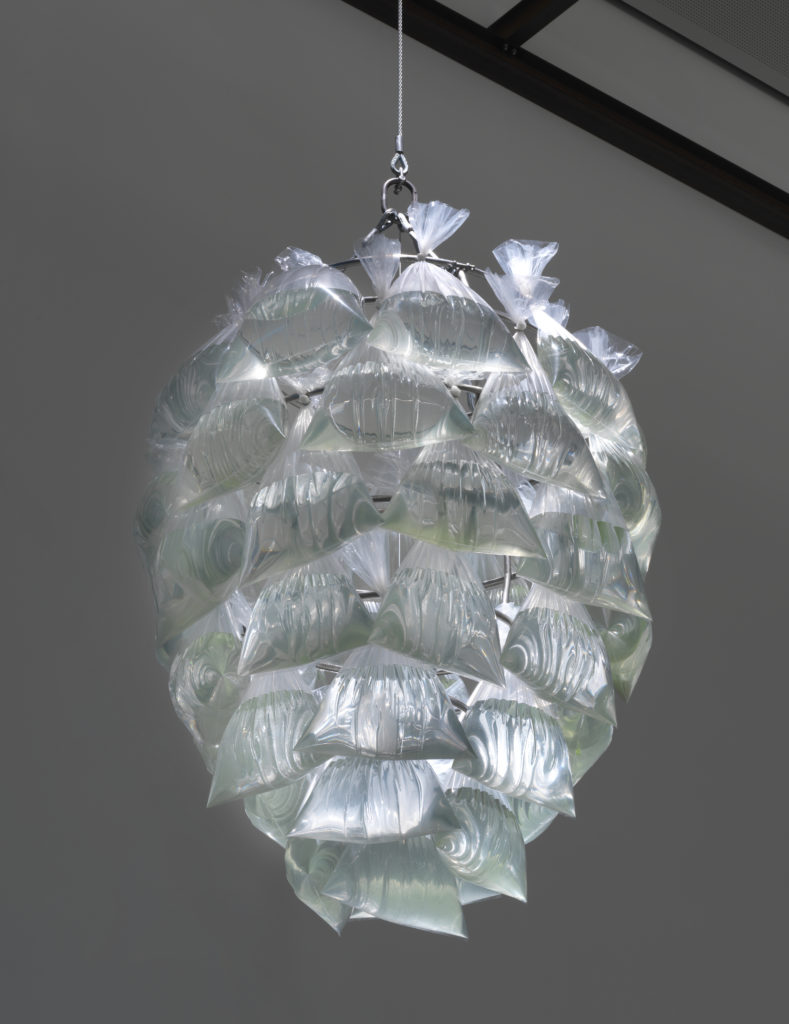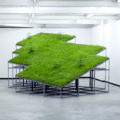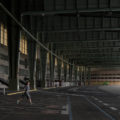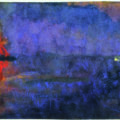“As We Used To Float” Julian Charrière
4 p.m. in Berlin. It is the end of October and the winter is coming already: the sun is almost setting. I meet the twilight also behind the door I just open. I see red palms in the last sun rays, a beach with damp and warm sand, the sea water, where golden reflections glitter. Everywhere small splinters shine like stardust or sequins, which makes this landscape look marvellous. Or kitsch. The sight looks so idyllic that it is almost suspicious. My eyes detect a kind of squeak. This picture is like a postcard but the print is far too big and the contents way too flat. Eventually no one would like to lie down on this beach.
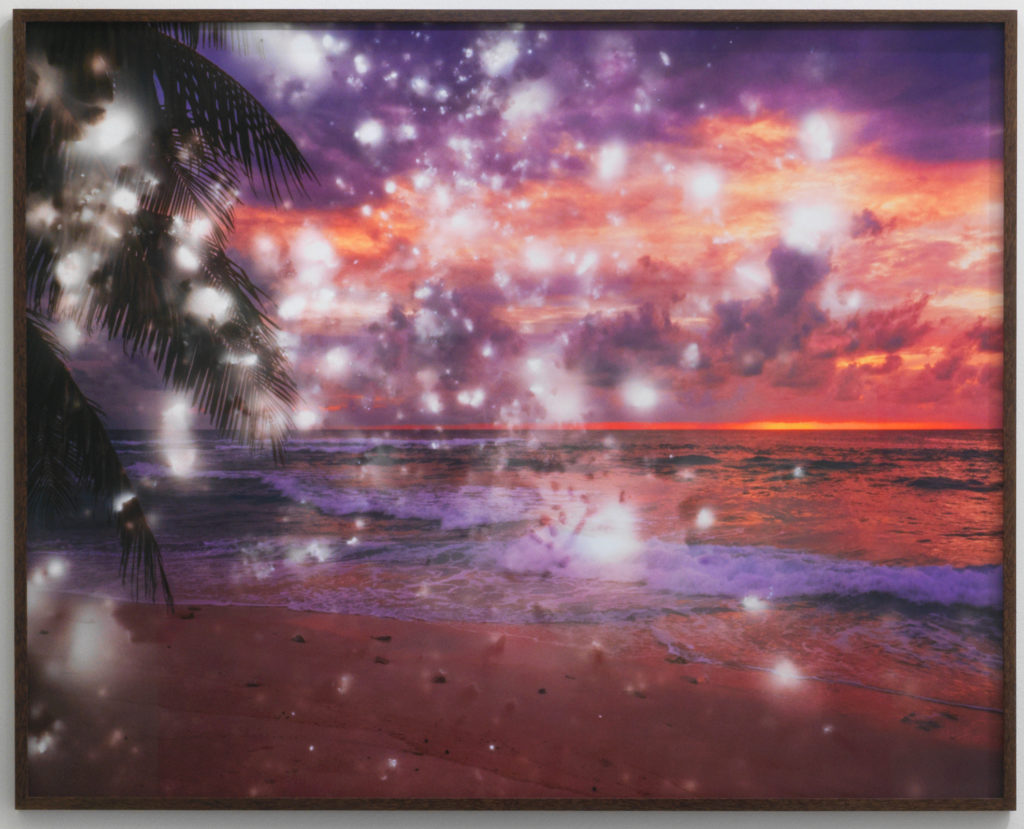
I turn my back on this image and enter a dark room where a film is screened. Still the same beach, still the same palm trees, the same sand and the same twilight colors. The sea looks calm, harmless. Slowly I get closer to its impenetrable surface. Its movement seems quiet and peaceful. Suddenly the head dives into the water. There, too, everything is quiet. In front of me stands a block of concrete, which I approach slowly and carefully. The music becomes louder and oppressive. The rhythm becomes faster. I swim within the block of concrete through a window. The room is full of water. Apart from that it is empty. The music becomes quieter. I stand on the beach again and look at the other side of the landscape to understand what makes this island so creepy. The block of concrete under water suggested a kind of Atlantis of modern times. What will I discover in the inland? Palm trees. A luxuriant vegetation. For a moment I remain silent to realize that nothing is moving. Only the wind caresses the palm leaves. I go back into the water, under water, into the block of concrete, into the palm forest: nothing. Nothing. No life, nowhere. There’s no life here, but it’s not dead either: small fish swim far back in the water, there’s vegetation everywhere. It’s neither a documentary nor a fiction, but the aesthetics of the film are inspired by these two genres to make us question the not empty nothingness in which we are moving. There is no action, no answer, no development, but also no stagnation. The island isn’t haunted. There is another kind of strangeness.
I leave the projection room. There is a large installation room behind the screen, where I move freely between the objects that have been displayed. There are sculptures on the floor reminiscent of coconuts. It looks as if they were picked and piled up. To the left of it hangs an enormous object, like a bell made of dry wood. But the coconuts are made of lead and the bell of rusty metal. One need to stand very close to see that. Transparent plastic bags are hunging on the ceiling. They are the same plastic bags as the ones one get in pet shops to bring a fish back home. But these only contain water, sometimes an algae or a little mud. At the back of the room, a film is projected on a big screen. The focus of the camera stays always on an old ship’s propeller. The only movement is that of the water. The propeller looks very large, but the frame is too narrow to judge the scale correctly.
Julian Charrière. As We Used to Float. GASAG Kunstpreis 2018. Installation view, Berlinische Galerie. Foto: Jens Ziehe © Julian Charrière © VG Bild-Kunst, Bonn 2018
Each element of the installation is double-sided. Each landscape and each component of the landscape contains an indescribable and blurred riddle. The puzzle deals with a kind of duality. Or rather with an ambivalence. Each object has a double identity and reveals nothing but this duplicity without further explaining it. And the overlapping of meanings increases the platitude of the place. What exactly is doubled? The identity of the elements. The installation questions the ambivalence of perception and reality, which is a constantly reinterpreted artistic topos. But the littoral topos of the exhibition is also double-sided. It seems that we are on an island paradise: a globalized image that has long been regarded as a symbol of vacation, nostalgia, or even as a primeval landscape. The ideal, untouched and beautiful nature. It is the image of an island that does not refer to any geography. It is Fiji, Polynesia, Hawaii, New Zealand, the Caribbean… However, we are not on any island, since we read in the introducing text that we will enter the Bikini Atoll Island in the Pacific ocean. The contemporary history of this island is explained to us: from 1946 to 1958 the United States carried out nuclear tests there. This information, which is given from the very beginning, sharpens our view during the exhibition. We are not free of knowledge, just as this seemingly timeless island is not free of political history. Here is the duplicity. The general ambivalence. And these two levels imply many questions that go in two directions and ultimately meet again.
As for the very first photo; sand from the island has been scattered on the photographic film. The radioactivity of the sand has caused the small white spots that look like kitschy stars. Also due to the radioactivity, the artist had to cover the coconuts with lead in order to transport and display them in a public space. Thus, historical knowledge answers some questions; history is part of the artistic concept, which leads to this aesthetic of disturbing but also peaceful oddity.The artist plays with the representations of the timeless and the historical. He makes a installation that is both political and symbolic. This also reminds us that every symbol is the product of a political and social process.
Julian Charrière. As We Used to Float. GASAG Kunstpreis 2018. Installation view, Berlinische Galerie. Foto: Jens Ziehe © Julian Charrière © VG Bild-Kunst, Bonn 2018
« Et par manque de brise le temps s’immobilise, aux Marquises. Du soir montent des feux et des points de silence qui vont s’élargissant et la Lune s’avance. […] Et la nuit est soumise et l’Alizée se brise, aux Marquises. » Jacques Brel, « Les Marquises ».
Cover: Julian Charrière. As We Used to Float. GASAG Kunstpreis 2018. Installation view, Berlinische Galerie. Foto: Jens Ziehe © Julian Charrière © VG Bild-Kunst, Bonn 2018
27.09.2018 – 08.04.2019
Berlinische Galerie, Museum für moderne Kunst
Alte Jakobstraße 124–128 10969 Berlin



